Mapping the Future of Design Operations
Navigating the Evolving Landscape of Design Operations
by Jon Fukuda

Each year brings new advancements, challenges, and opportunities to the DesignOps community, but this time seems much different—for DesignOps people and the design profession in general. It’s never too soon nor too often to reflect, reexamine, and re-map DesignOps’ context, framing, and direction.
To that end, on April 18, 2024, we (the DesignOps Summit curation team) convened some of the leading DesignOps minds to reflect on the current state of our practice and its context and value in digital product and service organizations—and invited the DesignOps community to be a part of it. Collectively, we explored the evolving role of DesignOps within modern businesses.
The interactive session that extended into discussions on a FigJam board where participants shared their views and experiences. The session provided a comprehensive look into how companies integrate this essential function to streamline design processes and foster interdepartmental collaboration.
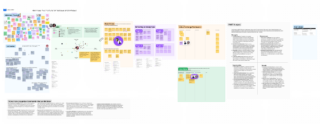
While we encourage you to go back and listen to the panel discussion in its entirety, this post is an attempt to summarize and highlight key insights from the panel discussion and insights from the participating community.
TL;DR Summary:
The recent DesignOps Summit explored the evolving role of DesignOps, highlighting its importance in bridging design with business strategy and the challenges in defining and measuring its impact. Key discussions focused on centralizing operations and enhancing cross-functional collaboration.
Key Points:
- Strategic Role: Recognized as a key strategic function, not just support, linking design with other business units.
- Measurement Challenges: Difficulty in defining clear roles and quantifying DesignOps’ impact remains a major hurdle.
- Future Outlook: Optimism about DesignOps growing into a vital business function with a clearer role and better integration across sectors.
Our Panelists
The panel, featuring experts from companies like Adobe, Cloudflare, Ikea, 8×8, Limina, and independent consultants, delved into several core areas of DesignOps, including its definition, organizational impact, and strategic value. The discussion highlighted a consensus on the importance of DesignOps as a bridge between design and other business units, such as engineering and product management.

Patrizia Bertini, at 8×8, emphasized the transformative potential of DesignOps beyond mere operational support. She advocated for a leadership role where DesignOps is integral to driving organizational change through design thinking applied across all levels.

Theresa Slate, a staff designer at Thrivent, highlighted operational challenges like maintaining productivity without burnout and the critical balance between delivering on time and fostering quality.

Z Zheng, from Cloudflare, shared her journey of scaling the DesignOps function as her organization grows, illustrating the dynamic nature of the role.

Dave Malouf, an advocate for the strategic potential of DesignOps, discussed how operations should not just support design but propel it forward by integrating business and creative goals.

Peter Boersma, a DesignOps consultant, spoke about the established nature of DesignOps in large organizations like Miro and IKEA. He stressed the importance of standardized roles and responsibilities to professionalize the field further and ensure that DesignOps can adequately support expansive design teams.
Key Themes and Discussions
During the course of providing context and background in their experience DesignOps, the following themes emerged from the discussion. While these themes have always been a part of the DesignOps discourse, they have become more prominent as the practice seeks out its role in our digital future.
Centralized vs. Decentralized Operations: There’s a notable tension between centralized DesignOps roles (recommended for cohesive strategy and support across design teams) and the trend towards decentralized, flat organization structures in many companies.
Role and Impact of DesignOps: DesignOps is seen not just as a support for the design team but as a crucial element in orchestrating broader business operations and strategy. The role often involves balancing internal management with external advocacy, ensuring that Design’s value is understood and integrated across all business levels.
Challenges in Recognition and Definition: A recurring theme is the difficulty in defining and asserting the value of DesignOps within organizations. This includes challenges in getting buy-in from other departments, aligning DesignOps with business goals, and adequately explaining the role to non-design stakeholders.
Importance of Adaptability and Contextual Metrics: Metrics and success indicators for DesignOps should be adaptable and context-specific, reflecting the unique challenges and operational dynamics of each organization. There’s no one-size-fits-all metric; instead, metrics should evolve with the team and the business needs.
Guilds and Community Building: In environments where DesignOps roles are diminished or decentralized, forming guilds or informal communities can help maintain a sense of unity and purpose. These groups can foster shared practices and support despite formal organizational structures.
“Design ops should advocate for design not just as a service but as a strategic partner in the business. This requires shifting perceptions of design from merely aesthetic or functional contributions to integral aspects of business strategy and innovation.”
Key Challenges in Design Operations
As with all practices, the challenges they face are highly nuanced and contextualized. However, they can also be addressed systematically and with a unified perspective on what “success” can look like. Here are some of the key challenges that surfaced during the discussion.
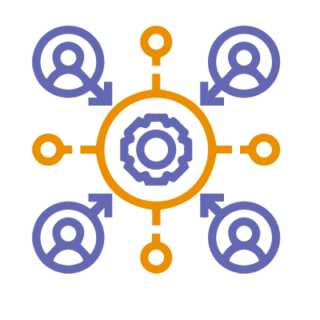
Organization and Structure
The conversation often circled back to whether DesignOps should be centralized or decentralized, reflecting a broader tension within organizations trying to balance efficiency with creativity.
Centralized DesignOps can enforce consistency and coherence across projects, while a decentralized approach might better foster innovation and local excellence within various lines of business.
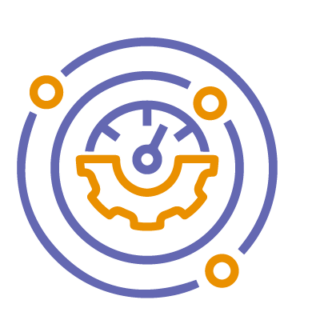
Measuring Impact
One of the toughest challenges highlighted was measuring the tangible impact of DesignOps. Panelists and participants on the FigJam board expressed that success in DesignOps isn’t just about efficiency but also about aligning with human-centered values and broader business outcomes.
The effectiveness of DesignOps is often hard to measure, leading to discussions on the need for adaptable, context-specific metrics. Panelists shared insights into how they quantify the impact of DesignOps, highlighting the importance of aligning these metrics with broader business goals to demonstrate clear value.

Integrity Considerations
The concern about compromising the integrity of user-centered design (UCD) in the context of DesignOps integration and operational challenges is an important issue raised during the DesignOps Summit Community Session. This topic reflects a broader tension within organizations trying to balance operational efficiency with creative and user-focused processes. Ethical considerations were also a focal point, ensuring efficiency does not compromise user-centric approaches.
In many organizations, particularly those undergoing rapid scaling or those with a strong emphasis on efficiency (such as those with a heavy focus on operational roles like DesignOps), there is a risk of “process over people”.
Practical Implementation Insights
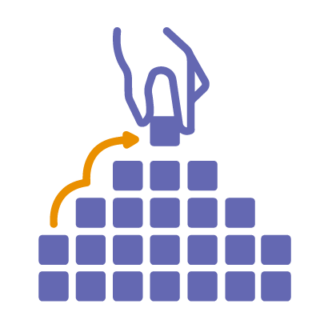
Build a Foundation Regardless of Maturity Level
Even in varied maturity stages within organizations, foundational tactics and strategies for DesignOps must be established. These foundations must be adaptable to the specific contexts and needs of the organization but should aim to support DesignOps universally.

Measure and Communicate Value Effectively
It’s crucial for DesignOps professionals to develop metrics that not only track operational efficiency but also demonstrate the value of DesignOps to the broader business goals. This involves clear communication strategies that align DesignOps outputs with business outcomes.
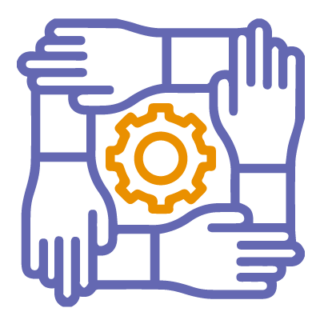
Foster Cross-Functional Collaboration
Encouraging collaboration across different business functions can help embed DesignOps more thoroughly into the business fabric. This involves dialogue and partnerships beyond the design team, particularly with product management and engineering.

Advocate for Design's Strategic Role
Design ops should advocate for design not just as a service but as a strategic partner in the business. This requires shifting perceptions of design from merely aesthetic or functional contributions to integral aspects of business strategy and innovation.
Dave Malouf and Teresa Slate delved into the strategic importance of DesignOps beyond mere support functions. They discussed its role as a central, strategic pillar that bridges gaps between design and other business units. The need for DesignOps to articulate its value clearly to leadership was a major point of discussion, emphasizing the shift in business perspectives needed to view DesignOps as a critical strategic partner.
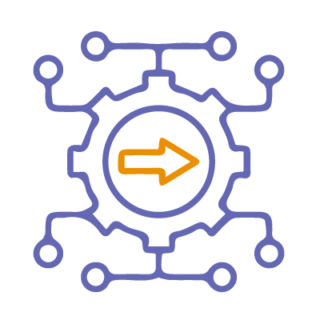
Expand Influence and Integration
As DesignOps continues to mature, its scope expands beyond traditional design teams. Insights from the panel and community discussions stressed the importance of integrating DesignOps across various functions to enhance organizational efficiency and unlock resources. This cross-functional alignment could drive significant organizational changes, fostering a community of collaboration and knowledge sharing.
Panelists debated the scope of DesignOps within organizations. While some viewed DesignOps as primarily a support mechanism for design teams, others argued for its role as a strategic partner influencing the entire business. This dual perspective underscores the evolving nature of DesignOps from tactical support to a central strategic pillar.
Community Insights and Interaction
During this panel discussion, we invited our 130+ attendees and community members to add their perceptions, thoughts, and ideas to a community FigJam board. Their interaction was a testament to the collective wisdom of the DesignOps community. Participants discussed operational challenges and proposed solutions while sharing personal experiences and best practices. This platform allowed for an unprecedented exchange of ideas, highlighting key issues like the need for clear operational focus, the establishment of adaptable metrics, and the expansion of DesignOps into broader organizational roles.
Ice Breaker

Misunderstood and undervalued
- DesignOps is often misunderstood and undervalued in the industry.
- It is seen as unnecessary or overkill, especially for small design teams.
- Some stakeholders think that Design Managers can perform the role of DesignOps.
- DesignOps is ambiguous and scattered.
- The value proposition of DesignOps is unclear.
- Implementing DesignOps can be a roller coaster.
- DesignOps is incredibly powerful but hard to explain as a framework.
- Change management is a big part of implementing DesignOps.
- DesignOps may overlap with traditional roles such as project managers or UX managers.
- Every implementation of DesignOps is unique.

Overlapping w/ Enterprise Responsibilities
- There is a lot of similarity between roles within large companies, such as product ops, DesignOps, and creative ops.
- Some organizations have reversed or merged DesignOps with or subsumed it into other non-related departments, making it an emerging practice that still needs to be normalized.
- There are issues in understanding the value of DesignOps and why it is necessary.
- DesignOps is a set of activities that must be done, regardless of who does them.
- DesignOps provides a framework for implementing and managing design processes and tools
- DesignOps helps in de-duplicating with other operations functions and ensures smooth collaboration between development, product, and tooling teams.
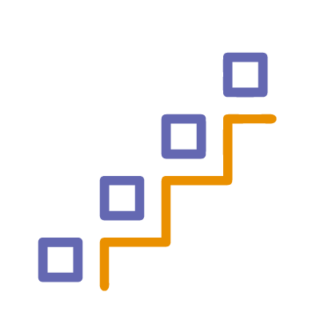
Maturing and changing
- DesignOps is maturing and changing, with different implementations in different organizations.
- It is evolving and expanding, supporting more areas of the business than just design.
- There is a need for change management when implementing DesignOps.

Under-resourced and underfunded
- DesignOps is often under-resourced and underfunded.
- It is challenging to work as a team-of-one and focus on high-value work when spread thin.
Plotting Value and Integration
We then asked community participants to plot on a 2×2 of Design being Valued (Low/High) and Design being Integrated (Low/High) And the result was a fascinating direct correlation between Design’s Value and its Level or thrust towards integration.
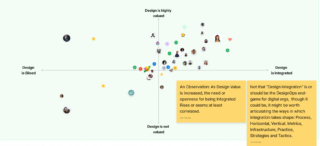
Community Contributions to the Board
Overall, the community contributions suggest that while DesignOps faces significant challenges, there is a clear trajectory toward greater recognition and integration. As the practice matures, it will likely play an increasingly critical role in shaping business strategies and enhancing organizational efficiencies across sectors. Here are key themes and insights that came from community contributions to the FigJam Board:
Measuring Impact and Value
- Challenges in Measurement: There is a significant challenge in quantitatively measuring the success of DesignOps, particularly regarding the impact on customers and overall business outcomes.
- Metrics for Success: DesignOps professionals are seeking ways to define clear metrics that reflect their impact beyond just workflow efficiencies, aiming to include broader business impacts.
Articulating Value
- Communication with Leadership: A recurrent theme is the necessity to better communicate the strategic value of DesignOps to executive leadership, advocating for a shift in business perceptions to see DesignOps as a crucial strategic partner.
- Ethical Considerations: There is an ongoing dialogue about balancing operational efficiency with human-centered values, ensuring that DesignOps practices do not compromise ethical standards or user-centric approaches.
Organizational Integration and Strategy
- Cross-Functional Collaboration: The importance of integrating DesignOps with various business functions is emphasized, suggesting that coordination across different operational areas can lead to more cohesive value streams.
- Career Advancement: Insights suggest that there is a path for career growth within DesignOps, but it requires building resilience and adaptability to thrive in diverse business environments.
Expanding Scope and Collaboration
- Beyond Design Teams: There is a push to expand the role of DesignOps to encompass broader areas within organizations, suggesting that DesignOps should influence not just design teams but also contribute to overarching business strategies.
- Knowledge Sharing: Strengthening community collaboration and sharing best practices are seen as vital for the development and integration of DesignOps across industries.
Operational Challenges and Solutions
- Organizational Structure: DesignOps’ position within an organization significantly impacts its effectiveness and the perception of its value. The optimal structure seems to vary based on the company’s size and maturity.
- Strategy and Focus: Establishing a clear focus and strategy for DesignOps is crucial; moving away from merely reactive positions (“firefighting”) to a more defined, strategic role is necessary for long-term success.
Public Perception and Internal Advocacy
- Misunderstandings and Value: DesignOps is often misunderstood and can be undervalued, especially in environments where its impact is not immediately visible or easily quantifiable.
- Advocacy and Relationship Building: Effective DesignOps requires building strong relationships across various departments to advocate for the value of research and design.
Concluding Community Insights
The discussions and shared experiences on the FigJam board highlight a field in transition. DesignOps is grappling with defining its identity and scope within complex organizational structures while striving to prove its value in tangible terms. The insights emphasize the need for:
- Strategic Communication: Enhancing how DesignOps professionals communicate their value to stakeholders to elevate their role from operational support to strategic necessity.
- Holistic Integration: Encouraging broader integration of DesignOps into business processes to ensure it is not siloed but rather a central part of organizational strategy.
- Adaptive Metrics and Ethical Practices: Developing flexible metrics that reflect the diverse impacts of DesignOps and maintaining a commitment to ethical practices in all operations.
Overall, these community contributions suggest that while DesignOps faces significant challenges, there is a clear trajectory toward greater recognition and integration. As the practice matures, it will likely play an increasingly critical role in shaping business strategies and enhancing organizational efficiencies across sectors.
Insights from the Audience Zoom Chat
The session was not only about discussions among experts but also involved significant interaction with the audience through a live chat. Participants expressed a keen interest in how to implement DesignOps in different organizational cultures and shared their personal experiences with integrating DesignOps into their teams. We pulled out insights from the chat as well to share:
Integration and Organizational Influence
- Discussions about how DesignOps is or isn’t integrated into the larger workflow and systems within companies.
- Influence of organizational structure on DesignOps roles.
Role and Identity of DesignOps
- Conversations pondering whether DesignOps is merely a role or a broader mindset and framework.
- Insights into how DesignOps functions across different levels of strategy and management.
Measurement of Success
Various queries and answers about how the success and value of DesignOps are measured and reported in different organizational contexts.
Challenges and Solutions
- Shared challenges in implementing and optimizing DesignOps in diverse environments.
- Solutions such as strategic integration, clear operational roles, and better measurement systems were discussed.
Zoom Chat Highlights
- Amy Evans’ question on measuring DesignOps success attracted significant direct responses and set off a thread about accountability and metrics in DesignOps.
- Theresa Slate’s comment that DesignOps may be more of a mindset than a role sparked broad agreement and many reactions, highlighting a central debate in the community about the identity and scope of DesignOps roles.
- Renee Humphrey’s comment about redundancy and waste without DesignOps emphasized the practical impacts of lacking coordinated operations, which drew a lot of nods (emojis) and was referenced multiple times.
- Jake Geller’s structured breakdown of DesignOps implementation phases offered a clear, relatable framework that received a lot of positive reactions.
Looking Forward and Overcoming Challenges

Despite its growing importance, DesignOps is often misunderstood and can be undervalued, especially in environments where its impact is not immediately visible. The panel and community discussions identified crucial strategies for overcoming these challenges, including building strong advocacy within and beyond the design community and developing relationships with key stakeholders to elevate the role of DesignOps within corporate hierarchies.
Looking forward, the panelists expressed optimism about DesignOps maturing into a key business function. However, they also noted challenges such as the need for greater definition and understanding of the role across industries, and the potential for underutilization due to vague role definitions.
Conclusion and Recommendations
The panel vividly illustrated that DesignOps is at a crucial juncture. As businesses across the globe strive to integrate design thinking deeper into their product development processes, the role of DesignOps is becoming more essential. The insights gathered from this event underscore the necessity for DesignOps professionals to continue developing strategies, sharing successes, and educating others about their integral role in business success.
Recommendations
- Community and Continuous Learning: Leverage community platforms like Slack and ongoing workshops (like those discussed in the panel) to keep the conversation around DesignOps active and evolving.
- Utilize Public Resources and Frameworks: Engage with available resources, books, and frameworks that guide setting up and managing DesignOps to navigate challenges related to organizational structure and stakeholder management.
Calls to Action
We encourage all design professionals and business strategists to dive deeper into the potential of DesignOps by joining our ongoing discussions in the Rosenfeld Media community and participating in future events. Let’s continue to shape the future of DesignOps together!
- As DesignOps Community members, feel free to use the FigJam board to review, add, discuss, or workshop your take on the
- DesignOps Value Exchange Framework (an unfinished Project)
Submit your talk for the upcoming DesignOps Summit